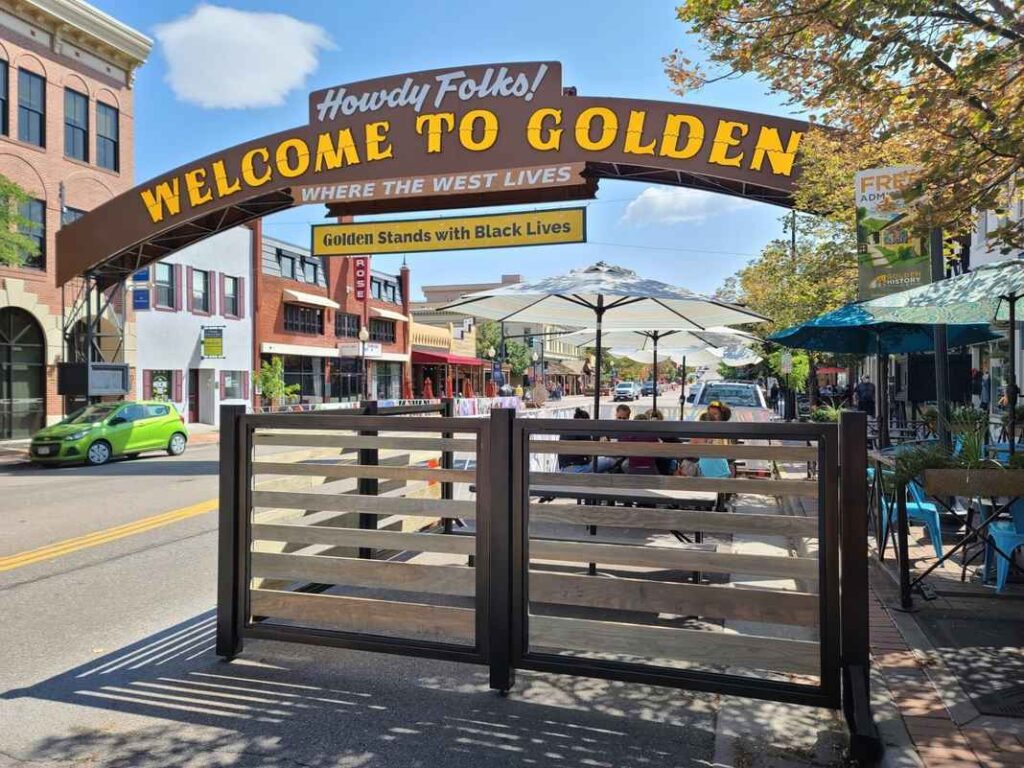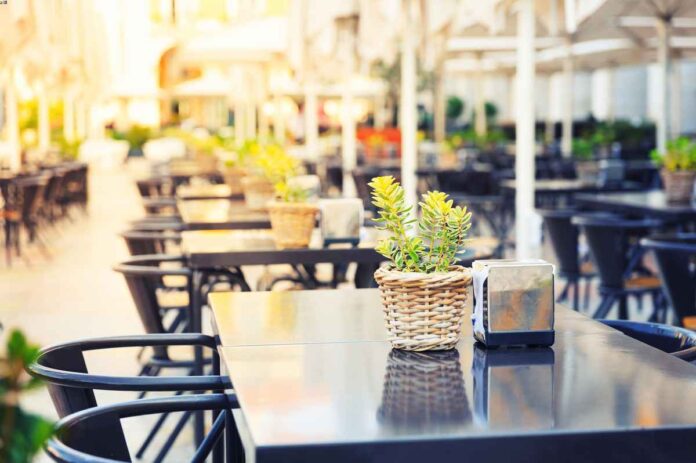For many bars and restaurants, expanded outdoor dining served as an emergency measure during the second half of 2020. “This was an experiment that was foisted upon us,” says Rick Muriby, planning director and interim economic development director for the city of Golden. Much of the permitting for closing parking lanes and erecting tents was invented quickly to support restaurants through the pandemic. However, soon people began to discover that they liked—even preferred—dining al fresco.
A number of Colorado municipalities are now embracing outdoor dining as a part of their permanent downtown design. City officials believe it brings vibrancy to neighborhoods and suits a population that loves the outdoors. But writing this type of dining into legal code looks different for every city, and many are still gauging which aspects of the expanded measures they want to keep or change. “Had there been no pandemic, [adding increased outdoor dining] would have taken a lot more discussion,” explains Robin Fleischmann, Golden’s economic development coordinator. Instead, the city watched the experiment play out in real time.
Golden already had a permit option for businesses to expand onto sidewalks and within their private properties. During the early months of the pandemic, it also added permits for expanded dining in alleys, parking lanes, and parking lots. But city planners knew that to make the situation more permanent, they’d need a more polished system.
“Had there been no pandemic, [adding increased outdoor dining] would have taken a lot more discussion.“
Robin Fleischmann, City of Golden
In March 2021, Golden announced a new seasonal parking-lane permit, which allows businesses to set up seating in the parking spaces in front of their restaurants. Businesses apply annually for the permit, which they can use from April 1 through October 31. The city has also offered a winter extension of those permits.
To make the parking-lane dining areas safe, Golden worked with Modstreet, a Durango-based company that makes modular patio infrastructure like fences, barricades, and enclosures. Modstreet, which didn’t exist before the pandemic, now works with 12 Colorado cities and two out-of-state cities, with more projects in Boulder, Idaho Springs, and Johnstown in the works. Golden purchased burnished-wood and metal fencing for streetside seating as a nod to its Western heritage. It financed much of the fencing with a $100,000 grant from the Colorado Department of Transportation geared toward revitalizing main streets. As part of that project, the city also plans to install more directional signage to ensure pedestrians still have easy access to Golden’s businesses.
Some businesses worry that the lack of parking will result in fewer retail sales, says Ryan Stachelski, director of community and economic development in Arvada. But according to two surveys conducted during the last year, the majority of the community is excited about dining expansions. In fall of 2020, out of 1,200 Arvada respondents, 90 percent supported permanent changes to outdoor seating. The following spring, out of 1,800 people surveyed, 88 percent were in favor.
Arvada also worked with Modstreet to create semi-permanent structures. The city spent approximately $1 million from American Rescue Plan funding to install uniform “parklets” and enclosed patio spaces that can be removed in the future. It also constructed curbs that keep regular traffic out of closed streets (like segments of Olde Wadsworth Boulevard and Grandview Avenue) but allow emergency vehicles in. Stachelski says the planning team will monitor the changes over the next five years to see what a more permanent, 20-year plan could look like.

“Dining is a major draw for people coming to Olde Town,” Stachelski notes. “Our restaurants are the heart of the reason to go.” Once people are there, the city hopes increased walkability will lead them into different businesses and benefit the retail sector as well. With the changes, city planners hope to make Olde Town into “not just a city destination but a regional one,” he adds.
Like its neighbors to the south and west, Fort Collins is also considering a plan to invest in outdoor dining, says project and policy manager Ginny Sawyer. Through informal surveys of restaurants and the community, her team has found that people love the expansion. However, the pandemic environment is still ambiguous, and the city doesn’t want to change anything immediately. Currently, Fort Collins has around 15 businesses with an outdoor permit to utilize space in a public right of way. That number is down from 30 during the height of COVID restrictions in the summer of 2020. Some of the shift has to do with increased indoor capacity and the change of season, but there are also labor shortages affecting restaurants’ ability to staff both indoors and out.
Colorado’s cities are still wrangling with many questions, such as how increased dining space will affect occupancy levels and required bathrooms; what rules they’ll have in place for lighting or amplified music; and even what the permits should cost. Planners are working with multiple agencies to ensure that seasonal and permanent outdoor dining is safe. It’s a “multidimensional thing to navigate,” Sawyer says. “How do we capitalize on it, but also address the complexities of it?”
Talk to us! Email your experiences (and thoughts, opinions, and questions—anything, really) to askus@diningout.com.
